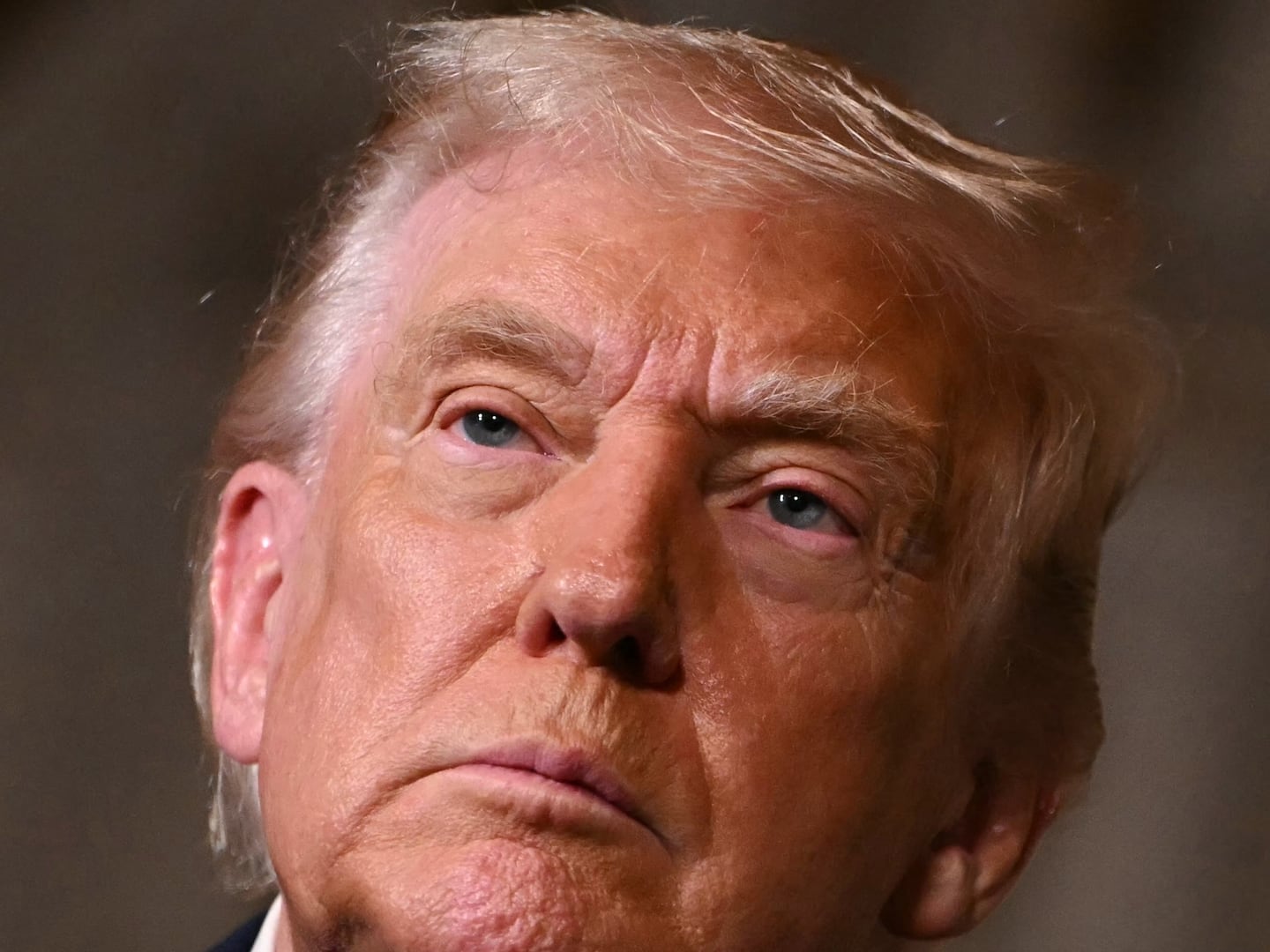When a week of chaos on the floor of the House ended with a near-fistfight and Kevin McCarthy finally claiming the gavel this weekend, it was easy to forget we were living through a pandemic.
But the novel coronavirus is still killing hundreds of Americans every day, with the XBB.1.5 variant poised to spark another major—if less than overwhelming—surge. And McCarthy and his fellow Republicans have a disturbing set of plans for so-called oversight of the coronavirus that could divert precious resources from what must be our main goal in the coming years: preventing the next pandemic.
It’s still early, and the shape of GOP intentions—and their ability to enact them—are still very much coming into focus. But it’s clear that after years of far-right, anti-science resistance to vaccines or basic pandemic safety, the Republicans plan to satiate their base’s lingering anti-government rage.
This could mean fresh epidemiological disaster—and not in 20 or 30 years, but within this decade.
Just after he became speaker, as the New York Times reported, McCarthy specifically singled out the “origins of Covid” as part of a pending portfolio of wide-ranging investigative activities. This may include creating a panel through imminent House rules, a previous version of which stated plans to “make findings, and provide legislative recommendations on the origins of the coronavirus pandemic, including the federal government’s funding of gain-of-function research.” (The “gain-of-function” fixation—referring to research that may promote the functionality or transmissibility of an organism like a pathogen—on the part of fringe groups reflects a long-time obsession with the idea not just that the coronavirus may have leaked from a lab, but that it was actually man-made.)

Dr. Anthony Fauci, White House chief medical advisor, speaks alongside COVID-19 Response Coordinator Dr. Ashish Jha during a briefing on COVID-19 at the White House on Nov. 22, 2022 in Washington, DC.
Win McNamee/Getty ImagesJust prior to the new year, Republican members on the House Committee on Oversight and Reform also made a series of misleading or downright outlandish claims. Among them: that they had evidence that COVID-19 likely originated from a laboratory in Wuhan, that experimental and risky coronavirus research was funded by the NIH, and that said information may have been covered up by Dr. Anthony Fauci.
The problem is these views represent an alternative reality to the findings from the mainstream community of biomedical scientists, especially the virologists.
Yes, it’s true that the so-called lab leak theory is not confined to the total fringe, and that well-credentialed experts—including Fauci—remain open to it. But three papers published in the Proceedings of the National Academy of Sciences USA last year tell a very different story for COVID-19 origins.
First, a paper by the Tulane virologist Robert Garry found that a “smoking gun” or signature of virus alteration in a laboratory, known as a furin-cleavage site, is actually found in many other coronaviruses and was not engineered as claimed. Two other PNAS papers also provided compelling evidence for COVID-19 emerging with the wildlife trade in China, while a fourth paper in Science Magazine found that Wuhan’s Huanan Seafood Wholesale Market was the early epicenter of COVID-19 origins.
No findings can entirely rule out the possibility of lab leak, and I have long argued it is theoretically plausible. But the extensive studies and information collected even in the past year overwhelmingly point to animal origins of COVID-19.
Animal origins also account for how earlier serious coronavirus infections—severe acute respiratory syndrome (SARS) and Middle Eastern respiratory syndrome (MERS)—began in 2002 and 2012, respectively.

A policeman watches over a civet cat captured in the wild by a farmer in Wuhan, central China's Hubei province on May 26, 2003.
AFP via Getty ImagesThis brings us to the most important point: We have now had three serious epidemics or pandemics from human coronavirus infections in this 21st century—first SARS, then MERS, and now COVID-19. This is a reason my research group began making coronavirus vaccines a decade ago. Mother Nature is not being obscure or coy with us. She has let us know the plan: Every seven to nine years the world will experience a serious, potentially worldwide pandemic from coronaviruses that likely first arise from bats before they jump to humans. Typically, this happens through a second mammal host, such as a civet cat in the case of SARS, camels for MERS, and, likely, an animal to be determined (potentially pangolins) for COVID-19.
Another recent study suggested that every year, roughly 400,000 people become infected with SARS-related coronaviruses (COVID-19 is caused by the SARS-2 coronavirus) “in spillovers that never grow into detectable outbreaks.” The point is that coronaviruses are jumping from animals to humans all the time, and then, perhaps once a decade, one catches fire or gains critical mass to ignite an epidemic or pandemic.
Assuming this is true, we are just a few years away from COVID-26 or -27.
Make no mistake, the fourth major coronavirus epidemic/pandemic is approaching. So instead of calling for hearings to investigate low-likelihood lab-leak scenarios and the even lower-to-non-existent probability of human-made origins of COVID-19, we should be getting ready for No. 4.
Unfortunately, we are not prepared—and even if McCarthy and friends can’t dismantle the executive branch with one house of Congress, it’s already in rough shape.
In 2020, we saw how the CDC missed the entry of the SARS-2 coronavirus from Southern Europe and Asia into New York, and then failed to get diagnostic testing underway. The CDC also fell short in scaling up the genomic sequencing of the virus, failed to model the path and scope of the illness in the U.S. and globally, and had to rely on the United Kingdom or Israel for measuring the effectiveness of COVID-19 vaccinations, among its other deficiencies.
Under the leadership of Dr. Rochelle Walensky, the CDC has improved in many of these aspects, but it is still far from ready to handle another coronavirus outbreak such as one resembling the COVID-19 pandemic.

Dr. Rochelle Walensky, Director of the Centers for Disease Control and Prevention, testifies before the Seante Health, Education, Labor, and Pensions Committee during a hearing on monkeypox on Capitol Hill in Washington, D.C., on Sept. 14, 2022.
Sarah Silbiger for The Washington Post via Getty ImagesIf the U.S. Congress truly wanted to be helpful, rather than embark on fruitless scientific witch hunts, which will serve to distract the scientific community, it would focus on getting us ready for the next pandemic. We must modernize and strengthen the CDC’s activities related to basic and molecular virology, epidemiologic modeling and forecasting, and measuring the benefits of vaccinations in real time. We need to restore the CDC’s reputation as the premier disease-fighting force globally.
In other words, the Biden administration has yet to get us ready for the next pandemic in two years—which is understandable. But now McCarthy’s henchmen could be writing the roadmap for a new GOP administration to wreak havoc in 2025. In the meantime, government experts will have to look over the shoulders.
So long as he enables pandemic skeptics, and detracts from the urgent need to get ready, Speaker McCarthy is personally working to risk a fourth devastating coronavirus pandemic. It could come sooner than you think.







